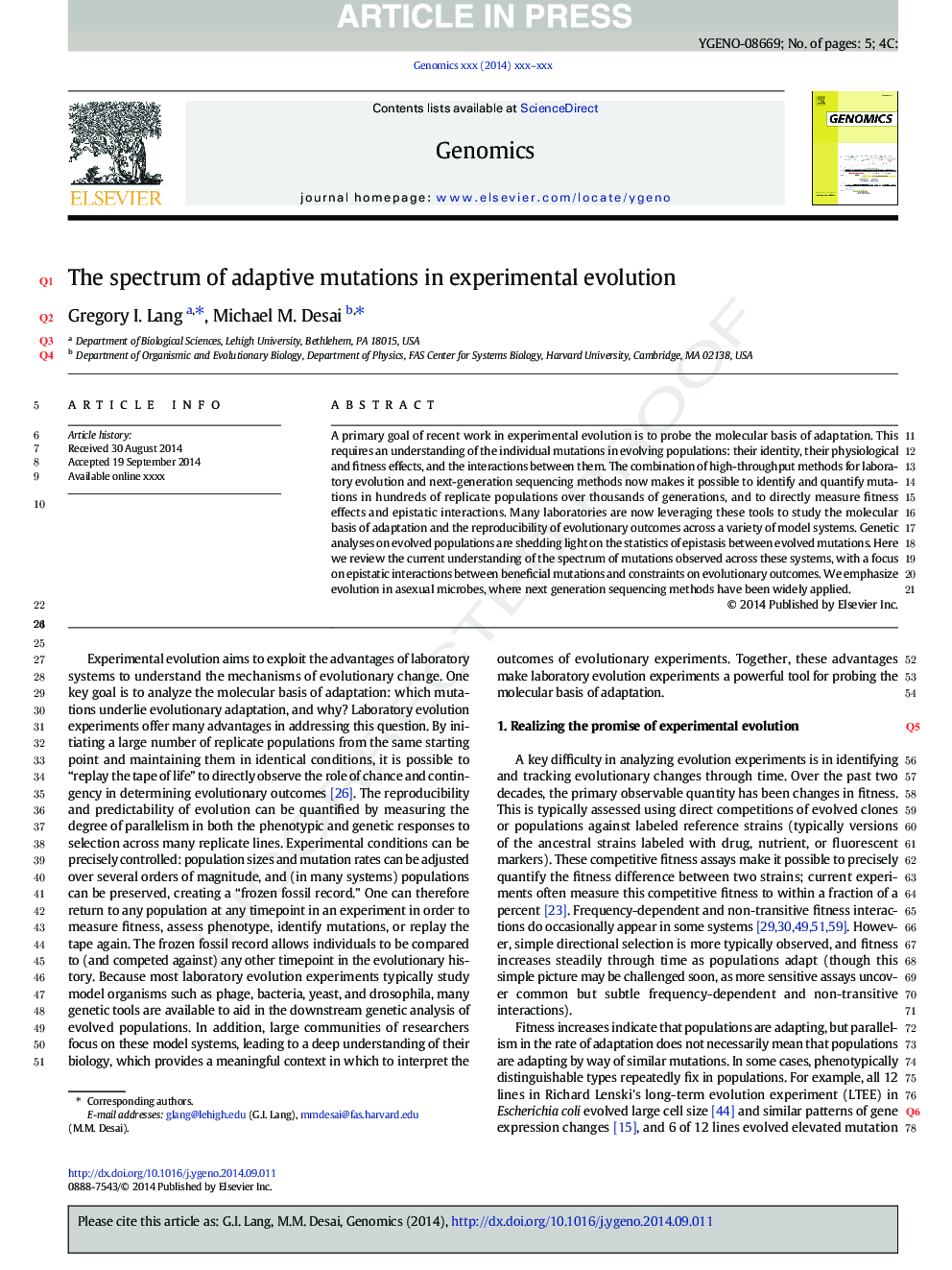| کد مقاله | کد نشریه | سال انتشار | مقاله انگلیسی | نسخه تمام متن |
|---|---|---|---|---|
| 5907933 | 1160891 | 2014 | 5 صفحه PDF | دانلود رایگان |
عنوان انگلیسی مقاله ISI
The spectrum of adaptive mutations in experimental evolution
ترجمه فارسی عنوان
طیف جهش های سازگار در تکامل تجربی
دانلود مقاله + سفارش ترجمه
دانلود مقاله ISI انگلیسی
رایگان برای ایرانیان
کلمات کلیدی
تکامل تجربی، جهش های سازگار، توالی بعدی نسل،
ترجمه چکیده
هدف اولیه کار اخیر در تکامل آزمایشی این است که پایه مولکولی سازگاری را بررسی کند. این نیاز به درک جهش های فردی در جمعیت های در حال تحول دارد: هویت آنها، اثرات فیزیولوژیکی و تناسب اندامشان و تعاملات بین آنها. ترکیبی از روشهای پرکاربرد برای تکامل آزمایشگاه و روشهای توالی نسل بعدی، اکنون امکان شناسایی و اندازه گیری جهش در صدها جمعیت تکثیر بیش از هزاران نسل را دارد و به طور مستقیم اثرات تناسب اندام و تعاملات اپیستاتیک را اندازه گیری می کند. در حال حاضر بسیاری از آزمایشگاه ها این ابزار را برای بررسی مبانی مولکولی سازگاری و بازتولید نتایج تکاملی در سراسر سیستم های مختلف مدل استفاده می کنند. تجزیه و تحلیل ژنتیکی در جمعیت های تکامل یافته، بر روی آمار اپیستازی بین جهش های تکامل یافته، نادیده گرفته می شود. در اینجا ما درک کنونی طیف جهش های مشاهده شده در این سیستم ها را بررسی می کنیم، با تمرکز بر تعاملات متقابل بین جهش های مفید و محدودیت های نتایج تکاملی. ما تاکید بر تکامل در میکروب های غیر جنسی، که در آن روش های توالی نسل بعدی به طور گسترده ای مورد استفاده قرار گرفته است.
موضوعات مرتبط
علوم زیستی و بیوفناوری
بیوشیمی، ژنتیک و زیست شناسی مولکولی
ژنتیک
چکیده انگلیسی
A primary goal of recent work in experimental evolution is to probe the molecular basis of adaptation. This requires an understanding of the individual mutations in evolving populations: their identity, their physiological and fitness effects, and the interactions between them. The combination of high-throughput methods for laboratory evolution and next-generation sequencing methods now makes it possible to identify and quantify mutations in hundreds of replicate populations over thousands of generations, and to directly measure fitness effects and epistatic interactions. Many laboratories are now leveraging these tools to study the molecular basis of adaptation and the reproducibility of evolutionary outcomes across a variety of model systems. Genetic analyses on evolved populations are shedding light on the statistics of epistasis between evolved mutations. Here we review the current understanding of the spectrum of mutations observed across these systems, with a focus on epistatic interactions between beneficial mutations and constraints on evolutionary outcomes. We emphasize evolution in asexual microbes, where next generation sequencing methods have been widely applied.
ناشر
Database: Elsevier - ScienceDirect (ساینس دایرکت)
Journal: Genomics - Volume 104, Issue 6, Part A, December 2014, Pages 412-416
Journal: Genomics - Volume 104, Issue 6, Part A, December 2014, Pages 412-416
نویسندگان
Gregory I. Lang, Michael M. Desai,
